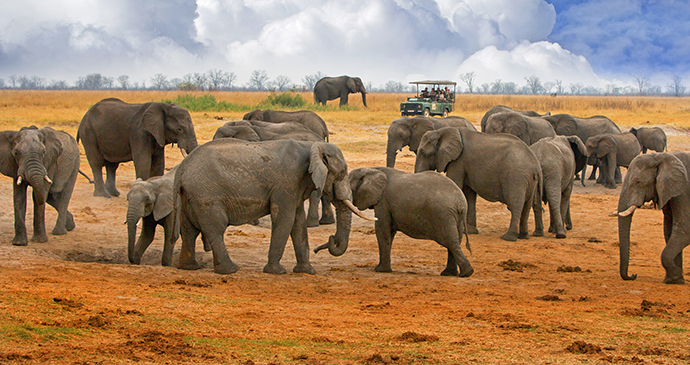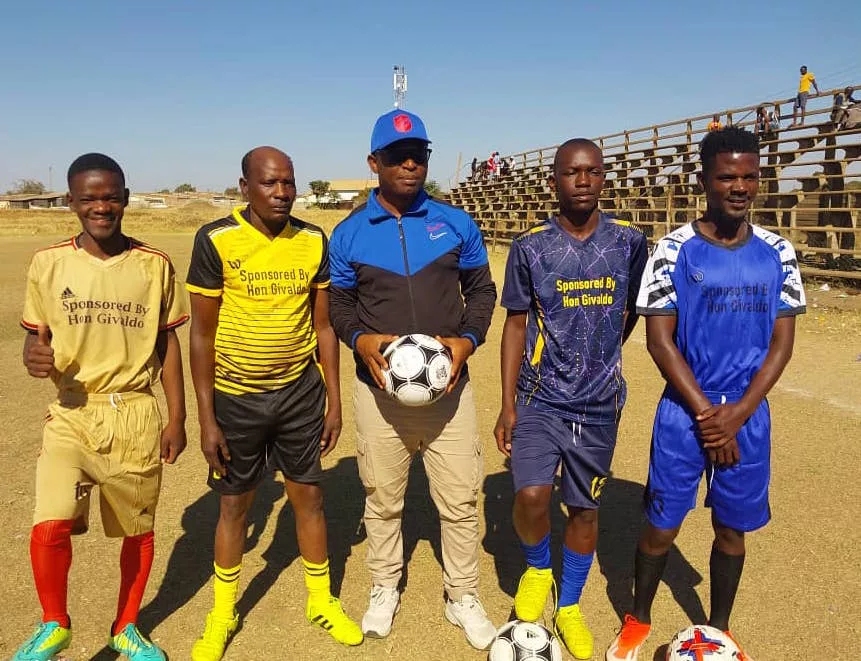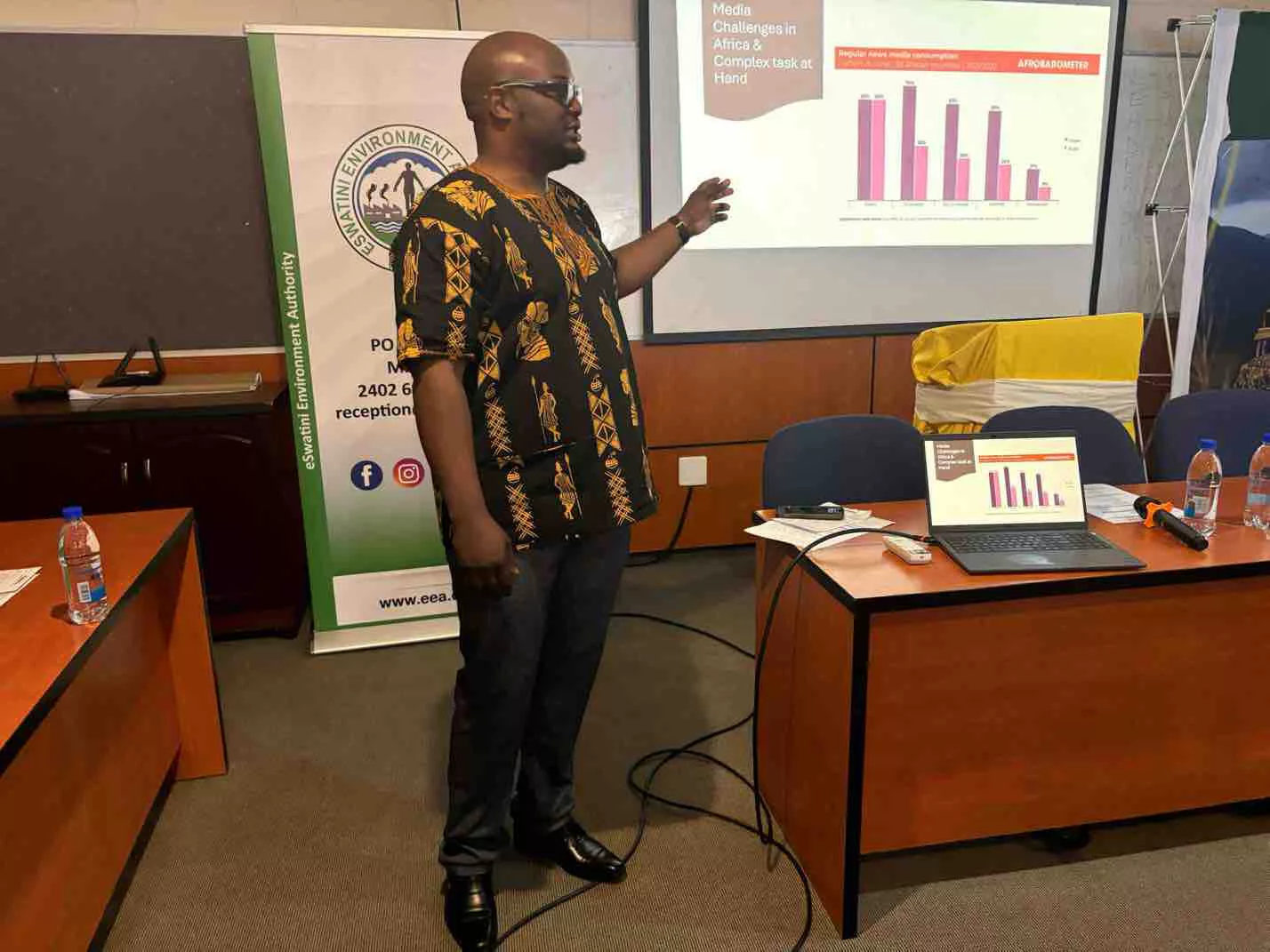Zimbabwe Environmental Law Association Information Department
Background
This is the second edition of the Situational Report (Sit-Rep) compiled by the Zimbabwe Environmental Law Association’s (ZELA) Wildlife Cluster.
This edition is a rapid assessment profiling mining activities taking place in four Protected Areas and Critical ecosystems (PACE).Suffice to indicate that there is still need for a more detailed study profiling the nature, extent and impacts of mining in protected areas, both to the communities living adjacent to such areas and surrounding ecosystem.
The Sit-Rep adopts a conservationist’s perspective in exploring the impacts of mining on wildlife, biodiversity, and the environment. The primary objective of the Sit-Rep is to provide factual evidence on the intersection of mining and conservation in PACE. While both activities are major contributors to socio-economic development in Zimbabwe, mining in PACE raises critical questions on the negative impacts on biodiversity, tourism, and several fundamental human rights of communities including the right to water, health, clean and safe environment.
This report is based on case studies from Chimanimani, Hwange, Umfurudzi, and Mazoe. Two data collection methods were used to collect qualitative data for compiling this report. Key informant interviews were carried out also targeting key stakeholders such as the Parks and Wildlife Management officers and selected miners found on site.
Observations were also key in profiling the nature and extent of the impacts of mining activities on the ecosystem and communities. This report is structured in three parts with the first part exposing the scale of the threat that mining poses to protected area management and Critical Ecosystems in Zimbabwe.
Data collection findings from the four case study areas on the impact of mining activities in PACE are set out in the second section, and the report concludes by providing recommendations on improving PACE management in Zimbabwe. It is hoped that these recommendations will feed into the ongoing and proposed legal and policy reforms by the government of Zimbabwe.
Introduction
The Convention on Biological Diversity (CBD) recognises that the quality of management and existence of protected areas is a key indicator of a society’s commitment to conservation[1]. However, the level of destruction in protected areas and critical ecosystem areas such as rivers, paving way for infrastructural development and mining has become an increasingly worrying trend in Zimbabwe. In the month of September 2020, there was an outcry by stakeholders in the tourism and hospitality industry and conservationists on the commencement of coal mining and exploration activities in Hwange National Park by Chinese companies.[2]
The proposed mining caught the interest of stakeholders at the local, national, regional, and international levels. However, while mining in PACE came to the forefront in 2020, it is not a new phenomenon in Zimbabwe. Further investigations by ZELA reveal that the special grant to mine in Hwange national park had been applied by ZMDC in 2011 and granted to them in 2015. In 2019, the Zimbabwe Mining Development Corporation (ZMDC) managed to identify Chinese investors to start operating through a partnership agreement.
It was at this point that the nation and world became aware that a special grant had been awarded to conduct mining activities in the Hwange National Park. Zimbabwe’s Park Estate which covers 13% of the country’s land is made of national parks, safari areas, recreational parks, sanctuaries, botanical gardens, botanical reserves, and Transfrontier Conservation Areas (TFCA’s). The Park’s Estate is managed by the Zimbabwe Parks and Wildlife Management Authority (Zim Parks ) established under the Parks and WildLife Act.[3]
The heightened interest on the issuance of exploration grant to the Chinese miners was because of the high-profile nature of the Hwange National Park. The park is the biggest and most iconic tourism destination among the estate that is managed by Zimparks. Besides Hwange National Park, reports show that mining in protected areas has been ongoing in areas such as the Chimanimani National Park, Umfurudzi Game Reserve, Matusadonha and Mana Pools. A number of other national parks are under consideration for prospecting and exploration activities.
Apart from national parks, mining in critical or ecologically sensitive ecosystems like rivers has also been ongoing for a very long time[4]. Examples of mining in ecologically sensitive areas like rivers in the form of riverbed mining include Mazowe River, Angwa River, Mutare River,Muterekwi,Insiza river and Matimba Rivers in Shurugwi. The cumulative total of the area with mining activities being undertaken which are both legal and illegal is approximately 1.31% of the 5million Hectares of the entire Parks and Wildlife Estate.
Data collection findings
Methodology
The Sit-Rep data was collected in person and using a network of community monitors in the protected areas applying tools such as questionnaires, observations and key informant interviews.During the compilation of the information contained herein, COVID-19 World Health Organisation and national lockdown Regulations were observed. Data was collected from Umfurudzi National Park , Chimanimani National Park, Hwange National Park and in Mazowe with much focus on the river which has been polluted and degraded as a result of mining activities by both Large Scale Miners (LSM) and Artisanal and Small Scale Miners (ASM). However, the ZELA research team was denied access to the mining site at Sinamatela camp in Hwange National Park. The ZimParks rangers advised that the area is a restricted security area and hence access could only be allowed on condition that there was a letter of authority from the Headquartes. As a result, no observations were carried out at the mining site.
1. Case Study areas
Chimanimani National Park Zimbabwe
The Chimanimani National Park is located in the eastern part of Zimbabwe at 19.8032° S, 32.8733° E and is part of the Chimanimani Transfrontier Conservation Area (TFCA). The Chimanimani TFCA comprises the Chimanimani Nature Reserve in Mozambique (2,368km2 with approximately 645km2 conservation area and 1,723km2 buffer zone), Chimanimani National Park (200 km2) and Eland Sanctuary (15 km2) in Zimbabwe. A total of 186 species are known from the site. The mountains hold three species of global conservation concern and two restricted-range species, as well as species characteristic of three biomes. Nectarinia veroxii was recently observed but may just be a vagrant.
The Chimanimani National Park is home to 90 Endemic grassland species that are currently being threatened by illegal mining activities. Illegal mining has been going on in the park since 2006 following the discovery of alluvial gold in some parts of the park and adjacent areas in Chimanimani district[5]. The mining activities were being illegally conducted by people from neighbouring communities. These people were working in collaboration with ZimParks Rangers. One of the key respondents had this to say,
“The mining in Chimanimani is being done by illegal miners. These miners do not have permits. While efforts have been made by local stakeholders to stop the mining activities in the park, these efforts have not been successful due to allegations that the miners are working in syndicates with protection from the ZimParks Rangers.
The Rangers are supposed to be stewards of the park and protect it from illegal mining activities. We have noted with concern that some miners bribe the Zimparks staff and this then allows them to go ahead and conduct mining activities in the park”.
The illegal miners in Chimanimani Mountain are Zimbabweans with no permits to mine in the park. According to some informants from the community, on average, between 550 to 700 illegal miners are found mining on any given day within the park. However, the numbers increased during the COVID-19 induced lockdown. The increase in the number of illegal miners is said to be as a result of limited income raising opportunities which have been threatened by the COVID-19 induced regulations including the lockdown.
In response to the influx of illegal miners into the Parks, the security services (ZRP, ZNA, Zimparks) in Mutare conducted a raid in the park. The purpose of the raid was to arrest the illegal miners who were reported to have thronged the park. One of the key stakeholders had this to say;
“We received reports from some tourism operators that the park had been invaded by illegal miners who numbered nearly 3 000. The miners were said to be working in collaboration with some rangers. So what we did was to organise a joint operation. When we went to the park unannounced, we indeed apprehended 7 illegal miners whom we found conducting some mining activities. This confirmed that indeed there was some illegal mining taking place in the park. We are appealing to our partners to report such activities to the police or Ministry of Enviroment”
Another key informant added;
“One of the problems that we are experiencing in Chimanimani is that our rangers are not trained to deal with artisanal miners. It is a new challenge to them. However, we would like to work closely with tourism operators to end this problem”
Impacts of illegal mining in Chimanimani National Park
Despite the recent involvement of the security services in a joint operation in combating illegal mining activities in Chimanimani National Park following the cabinet decision to stop mining in protected areas, reports indicate that there are still illegal mining activities happening in the park. From the research, respondents highlighted that most of the miners who mine in the Chimanimani National Park are pushed into illegal activities by the harsh economic situation. Illegal mining in the area has resulted in vast land degradation in the park. The miners are leaving open pits, and are contributing to the intensive loss of the mountain biodiversity. Mining in the area is polluting water, silting up rivers, and irreversibly damaging biodiversity. Artisanal miners often make use of mercury in their operations which is lethal both to wildlife and people. The use of mercury may endanger human life and livestock.
Violation of cultural rights
The illegal miners are not selective in terms of where they mine in the park. To them, there are no sacred places. All they are looking for is the yellow metal to make a living. According to some local traditional leaders, illegal alluvial gold mining in the Chimanimani Mountain is causing the destruction of many sacred areas. The destruction of the sacred areas violates the Ndau communities’ cultural rights as provided for in the Constitution[6]. The local community used the sacred places for conducting their traditional religious rituals. The destruction of the sacred places may cause harm to the community.
Access to water
The water source for communities around the Chimanimani National Park flows from the mountain. Prior to the illegal gold mining activities in the park, most community members were accessing clean water from the Mountains in Chimanimani. The rivers would flow all year round as the sources were undisturbed. However, due to the advent of illegal gold mining, many community members shared that the water has become dirty. The water from the rivers is now filled with mud and therefore no longer fit for human and livestock consumption. The communities also fear that the water could be contaminated with mercury, which is commonly used by artisanal miners. Water pollution by illegal miners violates the communities’ constitutional right of access to clean and potable water as stipulated in Section 77 of the Constitution.
Umfurudzi National Park
History shows that Umfurudzi National Park was habitated by the Mashona. These settlers were then followed by the Portuguese and later by the colonial mining prospectors. Post 1950, the area was designated as state land for wildlife habitation under the colonial government of the day and was managed by the Manicaland Hunters Association. The Umfurudzi National Park Pvt Ltd was formed in August 2010. It is a joint venture owned by ZimParks and Unifreight Africa Ltd. The park was formed to rehabilitate, conserve and sustainably operate the Umfurudzi safari Area. Umfurudzi National Park is one of the two parks in Zimbabwe managed by the ZimPaks where mining used to happen before it was designated as a protected area.
One of the Park rangers noted that,,“The Umfurudzi park covers about 760 square kilometres that have been divided into half. One half caters for wildlife conservation while the other half is for gold mining. Mining currently occurs on the northern side of the park”.
Quizzed on whether there have been reports of illegal miners invading the Park to undertake mining activities, the Ranger highlighted that such is not the case as of now. The miners are issued permits by the Ministry of Mines and Minerals Development. In the Umfurudzi Safari Area, mining claims are allocated and verified on the ground in line with land use practice. Mining in the Umfurudzi national park is being done by small to medium scale mining companies that are owned either by Zimbabweans or foreigners. The biggest mine in the Safari Area is the Sirenda Suraj Mine that is owned by an Indian. The miners pay an entry fee upon entry to the park while a certain percentage is paid to Zimparks. The respondents also added that,some well wishers from the mining sector have made donations to the Park in the past although these contributions are not compulsory.
Effects of Mining in conservation
Mining is illegally taking place on the other side of the Park. There is no fence demarcating the conservation area from the mining area. According to one Park Ranger , while there is no buffer zone , there are no incidents of Human and Wildlife Conflict and poaching that have been recorded in the area. Animals do not trespass to the mining area as they do not like the noise pollution that comes with mining operations. Most miners in the area do not process their ore on site and this reduces the use of hazardous substances such as mercury.For example, the Sirenda Suraj Mine processes its ore in Mtawatawa area. The mining companies are encouraged to reclaim the mined areas. This practice is closely monitored by Zimparks to ensure that no open pits are left which can be a hazard to both animals and humans in the area.
Mazowe River
Mazowe river rises in the north of Harare, and flows north and then northeast. The river forms part of the border with Mozambique and joins the Luenha River before entering the Zambezi River. Part of the Mazowe river passes through the Mazowe Citrus farm. According to artisanal miners who spoke on condition of anonymity, mining along the entire Mazowe river has been taking place for a while. However, mining in the portion of the Mazowe River that runs through the Mazowe Citrus Estate started in 2020. Mining activities in the area were conducted by a Chinese Mining Company that had been granted a permit to mine along the river. Mining along the river is being done by both illegal artisanal miners and large Chinese Mining Companies. To date, two Chinese companies have been involved in the mining along the Mazowe river. A Chinese company called Hezel started mining along the river in February 2020 and the locals argued that this Chinese Company had been granted a permit to mine by the Ministry of Mines. It is alleged that mining along the river stopped following the community outcry. The outcry emanated from the diversion of the river by the mining company which disrupted access to water by communities downstream. During its operation, the Chinese Mining Company was mining on the river and the flood plains.
When the Chinese Mining Company halted their operations, there was a sudden rise in Illegal mining activities by artisanal gold miners. On average, about 50 miners can be found mining along the river in a day. Most of the miners shared with ZELA that the economic situation has driven them to mine along the Mazowe River. They highlighted that they were mining to fend for their families. Both men and women can be found mining along the Mazowe River. As a result of the COVID 19 pandemic which led to the closure of schools, children have also engaged in illegal mining activities with some arguing that they are assisting their guardians and trying to raise money for school fees. The numbers are high during the off peak periods for the citrus activities.
Corruption in the disruption of critical ecological systems-The illegal miners along the river shared that while they know their activities are illegal, they would not stop as they did not have alternative income generating options at their disposal. “In some days, it is very difficult for us to work when the police conduct raids in these premises . In most cases, we run away but sometimes we are not too swift such that our gold ore ends up being confiscated by the police. Although it is a difficult working environment, we do not have any alternative,this is our only livelihood”.
They further highlighted that mining activities usually peak up during the dry season when water levels are low along the river.
Effects of mining on water –The mining activities have resulted in water pollution, due to loosening of the soil as people mine which has also increased siltation of the river. While some individuals who were interviewed shared that the Mazowe Citrus company provides water for household use, some shared that the water sometimes is dirty.
Hwange national Park
The Hwange National Park is one of Africa’s favoured tourist destinations that attracts tourists from around the globe. Hwange is a feeder destination to other tourism attractions within Zimbabwe such as Mana Pools, Binga, Msuna, Matopos, Chimanimani, Great Zimbabwe. Mining in Hwange National Park would therefore result in a significant reduction of tourists traveling to any part of Zimbabwe. In September 2020, it was reported that a Chinese Mining Company was intending to mine coal in Hwange National Park.
The Chinese Miners entered into a partnership agreement with ZMDC which was issued with Special Grants for mining and exploration in the Hwange National Park. Afrochine Smelting P/L, a subsidiary of the Tsingashan Group of China (Pvt) Ltd proposed coal exploration in the vicinity of Detema Dam and Masuma Dam.
The project scope involves opening of access roads, land clearing, geophysical and geochemical prospecting as well as drilling. The Chinese companies were reportedly cutting down trees and clearing important wildlife habitat to make way for mining activities in Hwange National Park. Hwange National Park has historically faced severe water shortages. By allowing mining activities to take place in the park, would add strain on an already low water table. River systems originating from the affected area which stretch all the way down the Zambezi will face contamination due to mine waste from coal mining in Hwange National Park.
The Sinamatella section of Hwange National Park is the only habitat with Black Rhino in the whole of the Matabeleland North province and provides a vital safe haven for these and other endangered and specially protected animals. Other endangered species in the area include the pangolin and the Painted Dogs, which draw global interest in conservation and tourism for Zimbabwe.
The areas targeted for mining within Hwange National Park are also the areas with the most reliable water drinking points for wildlife, from the Deka river system, Mandabvu dam, Masuma Pan, Shumba Pan, Lukosi River into main Camp Imvelo area and to Detema in Robins.
Mining operations, in general, result in adverse impacts in host mining areas and in most cases mining companies fail to follow environmental regulations in place that are aimed at guarding against environmental degradation. While it is accepted that mining within, or near, a national park may be unavoidable however,how are these mining operations going to be carefully controlled and monitored is a challenge. Furthermore, where mining operations are done without due regard to the law or the environment developments are not sustainable such as this special grant which was given without an Environmental Impact Assessment (EIA) certificate.Mining or any transformative activity in wildlife areas usually leads to outward displacement of animals from natural habitats which worsens the human-animal conflict as the animals move to human settlements. Potentially coal mining will scar the land and destroy wildlife habitats,pollute the air, environment and water resources while tearing up pristine forests to make way for roads, mines and worker housing. New health hazards for the communities as well.
Additionally, mining in a protected area is destructive. Moreover, coal mining has a grave, lasting adverse impacts on wildlife. Short-term implications include the killing of species or displacement from their natural habitats. For example, a report by the African Journal on Elephants on 18 November 2020 revealed that two elephants were killed after being hit by a speeding dump truck owned by one of the companies mining coal near Sinamatela Camp inside the Hwange National Park.
Recommendations
· There is a need for the government to amend the legal and policy framework specifically the Parks and Wildlife Act and the Mines and Minerals Act to speak the same language on mining in protected areas.
· There is a need for Civil Society Organisations and the Environmental Management Agency to put in deliberate efforts in building the capacity of the communities on the effects of mining in protected areas and such activities’ effects on fauna and flora.
· Where mining is allowed to take place, the Government should ensure that the local communities are consulted beforehand.
· In case mining in protected areas is not totally banned, there is a need to develop sustainable mining guidelines for use by the mining companies with clear environmental safeguards.
· There is a need for further research on how mining has affected flora and fauna conservation in Zimbabwe.
· There is also a need for companies operating in protected areas where mining operations have been permitted to promote responsible sourcing in line with Organisation for Economic Co-operation Development guidelines.
Download a copy here- http://www.zela.org/download/a-rapid-assessment-of-mining-activities-taking-place-in-protected-areas/
1] Phillips, A (2001). Mining in protected areas. IIED
[2] Fidelis Chuma and the Zimbabwe Environmental Law Association vs Zimbabwe Zhongxin Mining Group Tongmao Company (Pvt) Ltd & Others HH4888/2020
[3] Chapter 20:14
[4] Dhlakama, T.S and Moyo G.S. (2019)
[5]Gandiwa, Edson & Zisadza-Gandiwa, Patience. (2012). Biodiversity conservation versus artisanal gold mining: a case study of Chimanimani National Park, Zimbabwe. Journal of Sustainable Development in Africa. 14. 29-37.
[6] Section 16Attachments area






